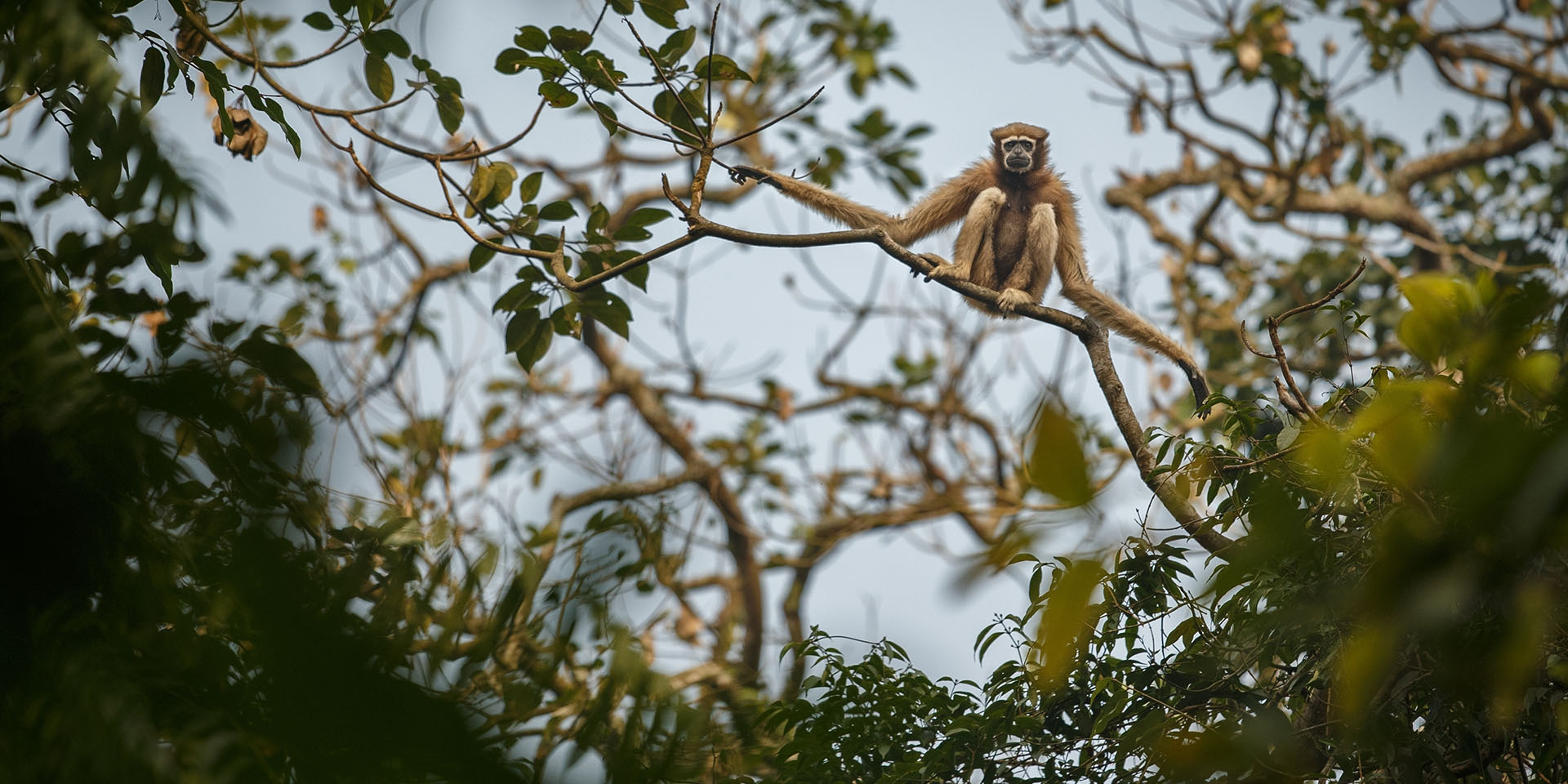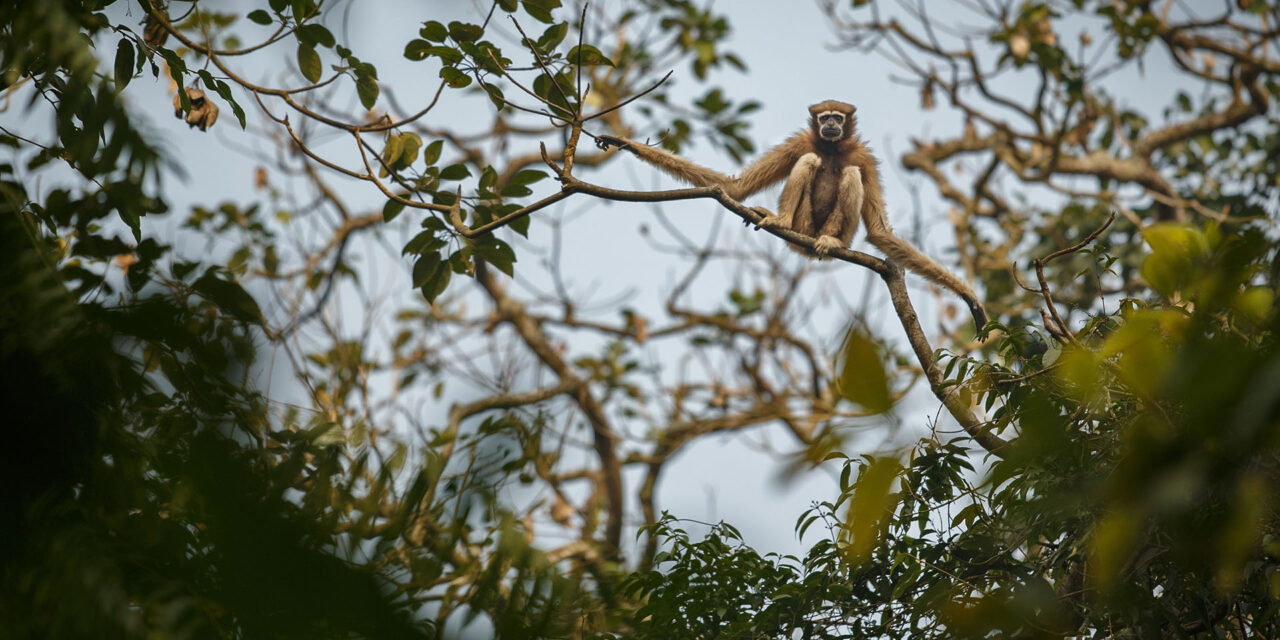WRITTEN BY
Travelogues
PUBLISHED ON
November 16, 2017
LOCATION
Bangladesh
It’s not easy to get out of the traffic of Dhaka, but once you do, the marshy, forested wilderness of Bangladesh is thick. Now, travelers today are unlikely to run across Bangladesh’s most famous animal, the mighty Bengal tiger, but hidden in the swamps and jungles, some very special animals are lurking.
Despite being home to tigers, elephants, and other large fauna, Bangladesh is not normally known for its wildlife – a reflection both of the nation’s biological diversity and humankind’s modern impact on it.
Western Hoolock Gibbon
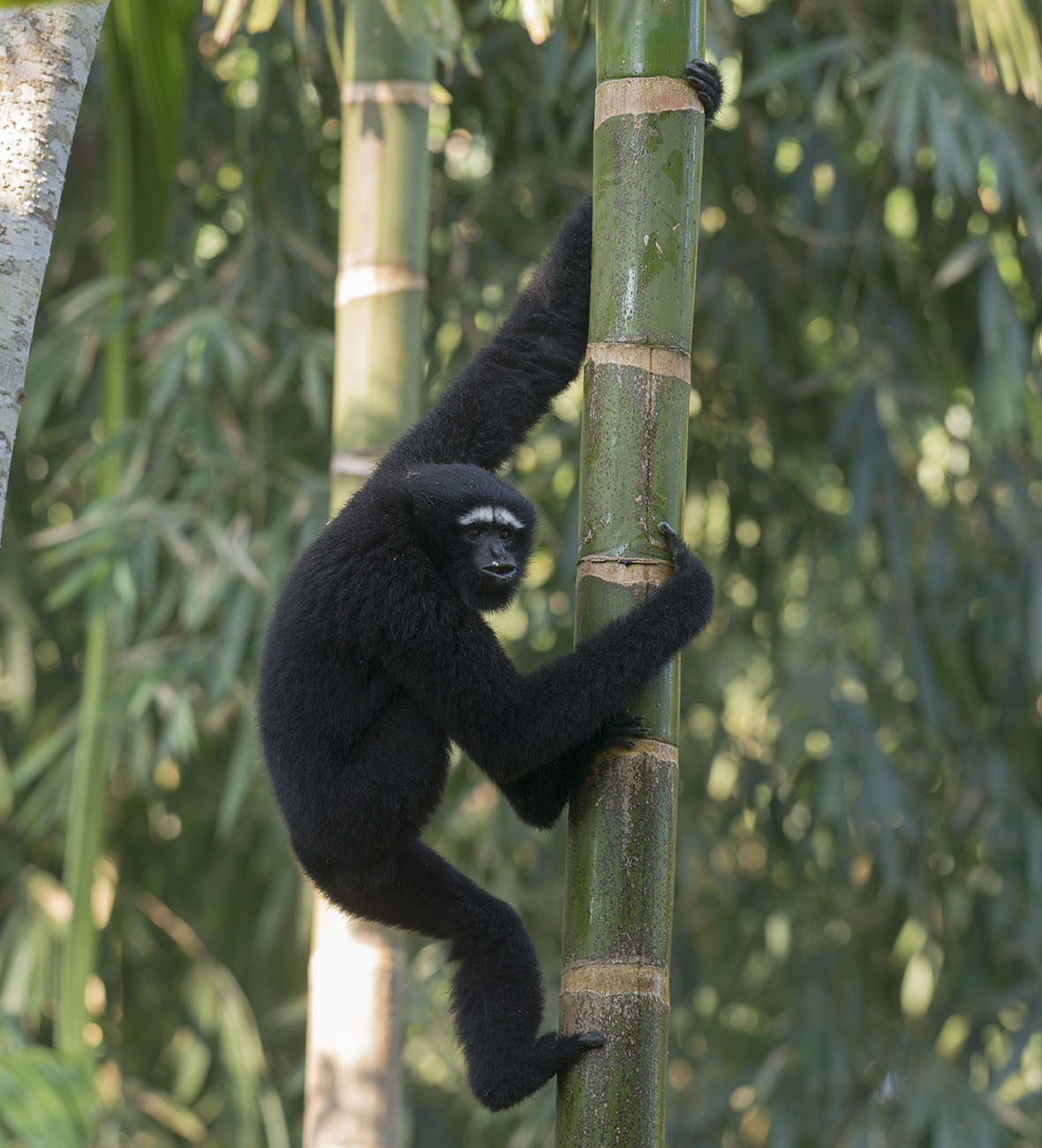
ABOVE: A male western hoolock gibbon.
Their shrill whooping call and swift movement among the treetops confirms the rare arrival of the western hoolock gibbon. Arms more than double the length of their legs, the population of these tailless primates has declined by almost 90 percent over the past 30 years as a result of deforestation and human interference.
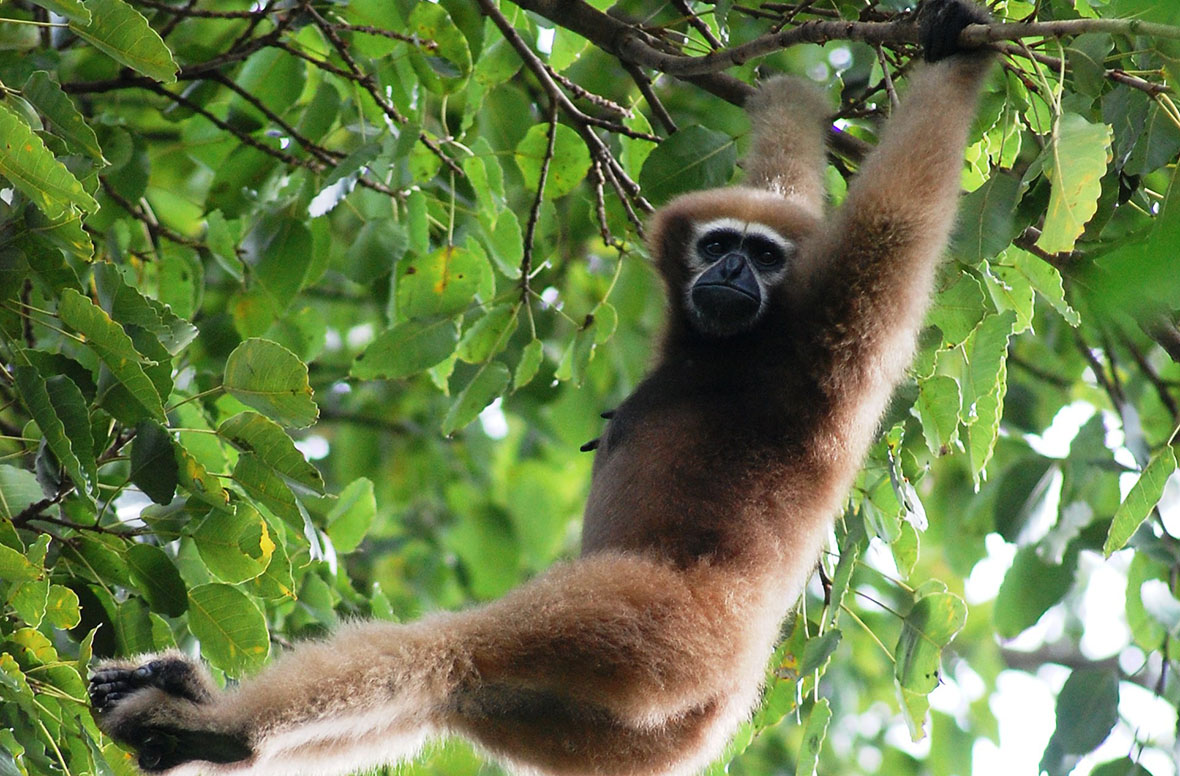
ABOVE: Very few western hoolock gibbons remain, but there is a chance of catching a glimpse of them in Lawachara National Park.
A recent addition to the Species Survival Commission (IUCN/SSC) list of the world’s 25 most endangered primates, these gibbons can be found in numbers between 200 and 300 hanging around the Lawachara National Park in eastern Bangladesh. A mixture of natural vegetation and planted tree species, the protected area is part of an ongoing conservation project replanting food trees for the western hoolock gibbon. Travelers can walk around the area on their own or with a local tour guide, but to avoid disappointment, early morning is the best time to spot (and hear) gibbons because that’s when they leave their nests to hunt for food. They rarely touch the ground, so eyes and ears should be angled toward the trees.
Mugger Crocodiles
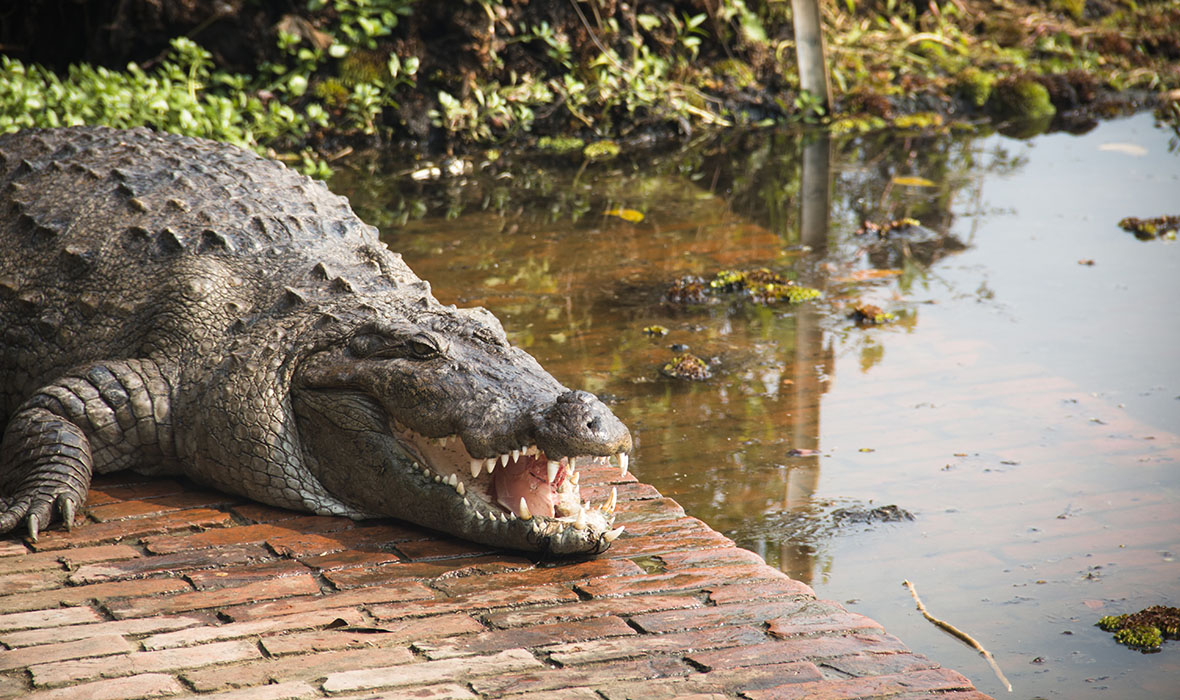
ABOVE: Besides their famous tigers, mugger crocodiles walk the muddy marshlands of the Sundarbans.
The sizeable mugger crocodile is heavily armored with fearsome grey-brown scales and has the longest snout of any crocodile in the world. The still, marshy shores of the Sundarbans – a certified UNESCO world heritage site which covers nearly 350,000 acres of mangrove forest – are an excellent environment for this terrifying reptile. Forest officials claim there are around 100 mugger crocodiles in the protected area, but in the labyrinth of canals and rivers inside the forest, sightings are a challenge.
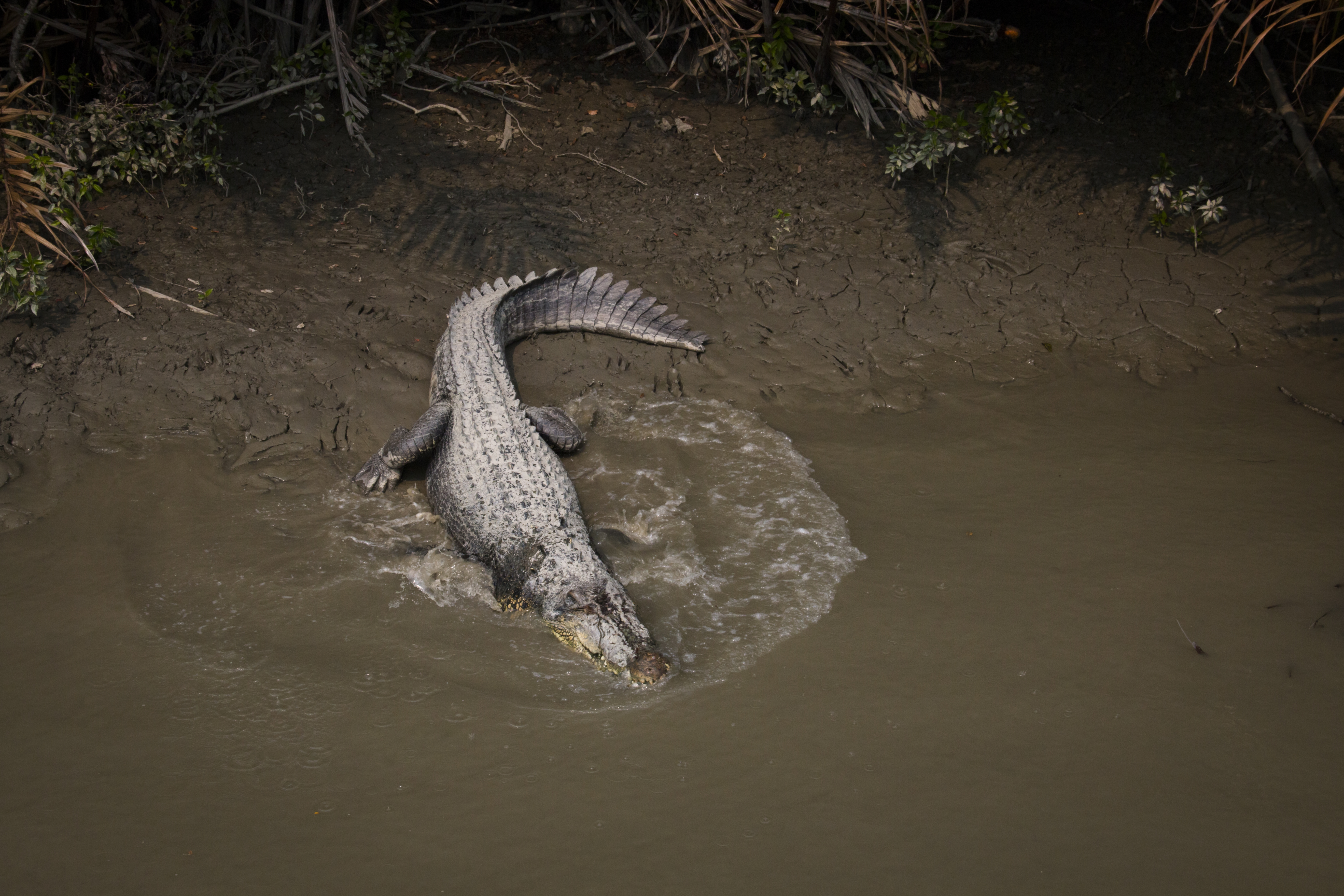
ABOVE: Mugger croc slinks into the waters of Bangladesh’s swamp lands.
Boat trips are available for travelers who wish to sail along the rivers of the Sundarbans in an attempt to spot the mugger crocodile. One-day trips are an option, but for the ultimate adventure three- to four-day trips from Khulna to the deserted mangrove beach Kotka on the Bay of Bengal can be arranged. Giant monitor lizards are often seen bathing in the sun. Another area famous for their crocs is the Tomb Mosque of Khan Jahan Ali in Bagerhatat, where they are often found in close proximity to those who go to the waters.
Gaur
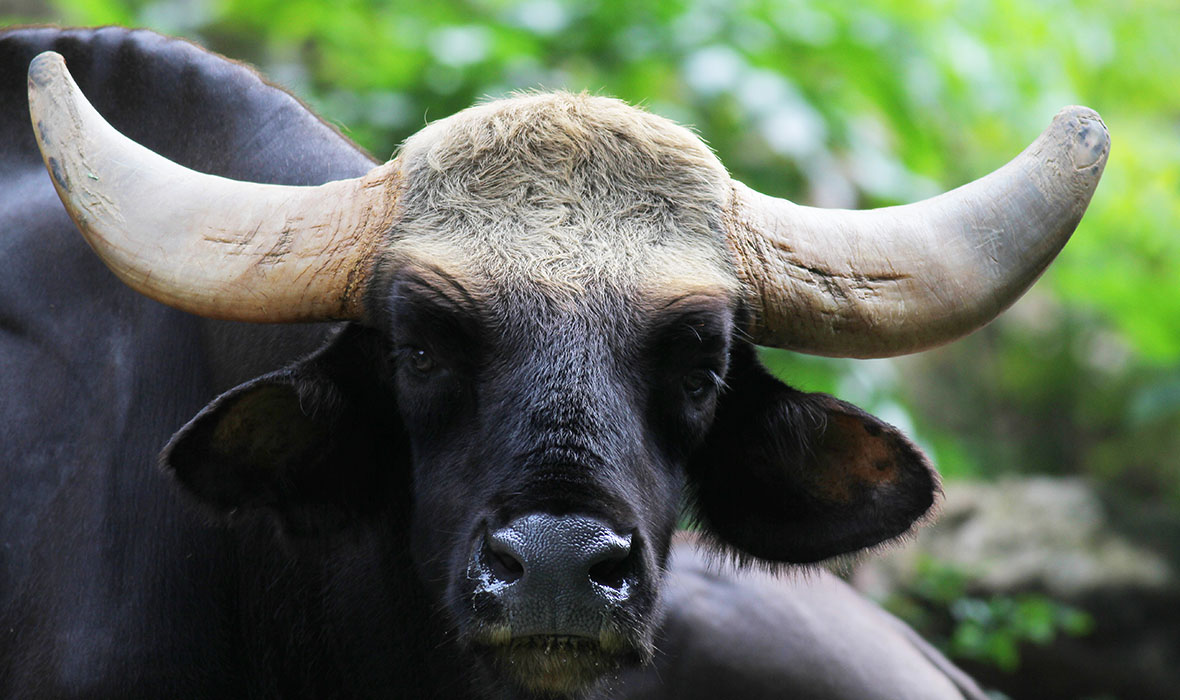
ABOVE: Found all over Southeast Asia, the gaur, or Indian bison, is the biggest cow in the world.
Roaming around the northeast corner of the Chittagong Hill Tracts and within the Pablakhali Wildlife Sanctuary is the formidable gaur. This strong, fearsome bovine has a distinct ridge on its ash-gray back and upward curling horns. Extremely powerful, the gaur is the largest type of cattle in the world – known for its shy, timid behavior. Classed as “vulnerable” on the IUCN Red List, the gaur’s population has declined by 70 percent over the period of three generations due to poaching, which is illegal in Bangladesh.
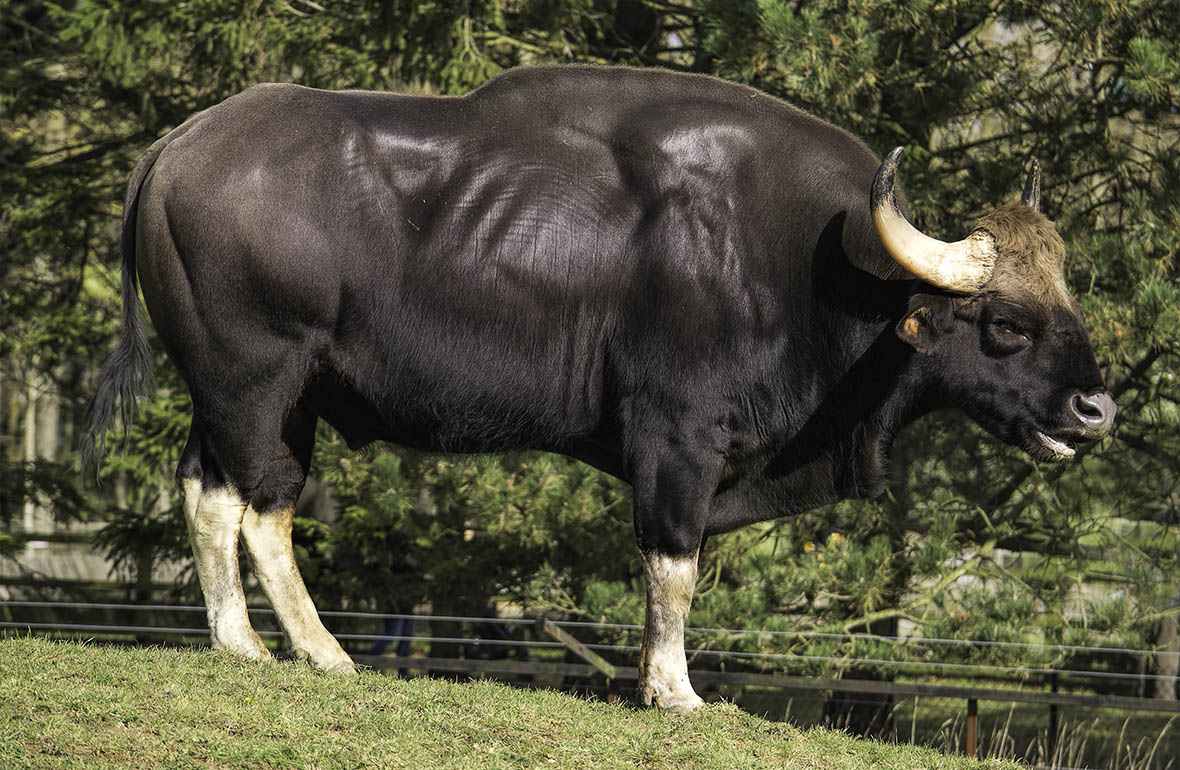
ABOVE: Despite their ubiquity in other nearby nations, the gaur is endangered in Bangladesh.
Gaur are diurnal animals, so travelers are more likely to see them during the day, thankfully. Jungle safari tours, adventure trailing, and camping are just some of the options available to explore the exotic wildlife in the Tracts. To increase chances of spotting the gaur, travelers are advised to visit between November and May. The nearest town is Rangamati and Shah Amanat. The nearest international airport is in Chittagong; from here, trains are available to the sanctuary.
Indian and Clouded Leopards
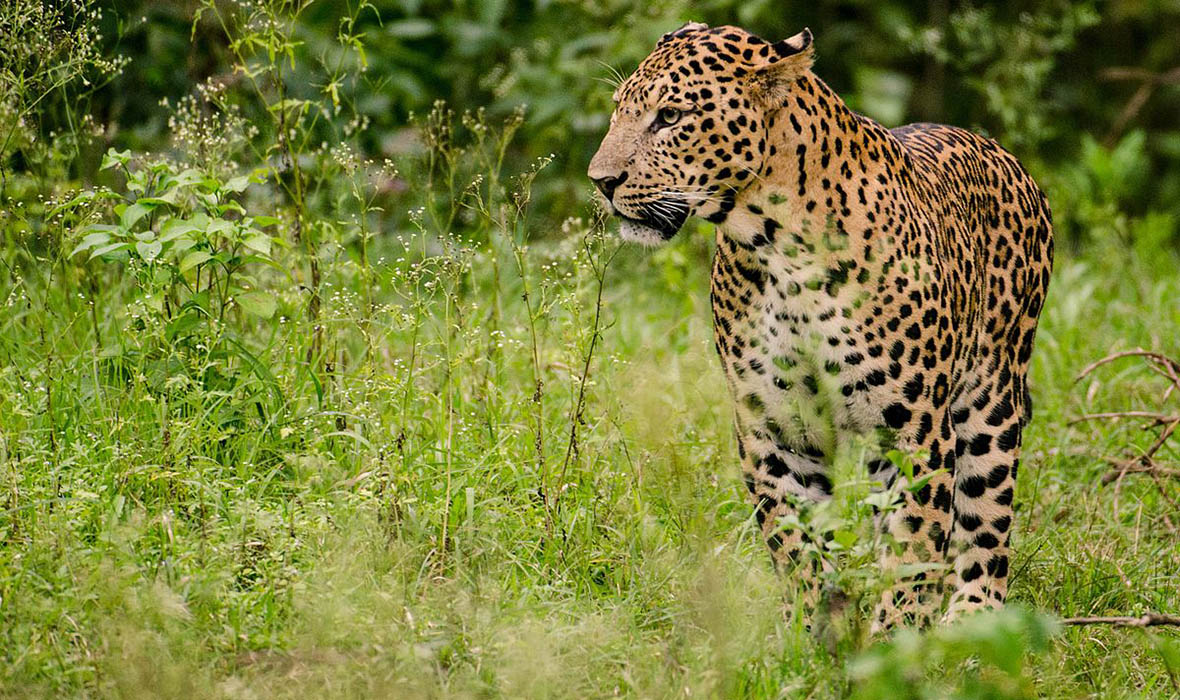
ABOVE: The Indian leopard is found rarely in the Chittagong Hill Tracts.
Flax-yellow blends with carob-brown fur, flecked with dark cloud-like markings; the Indian and clouded leopards saunter along the ground and in the trees, completely camouflaged in the dense thicket. If this doesn’t make it hard enough to catch a rare glimpse, there are less than 10,000 left in the world and they’re listed as “vulnerable” on the IUCN Red List.
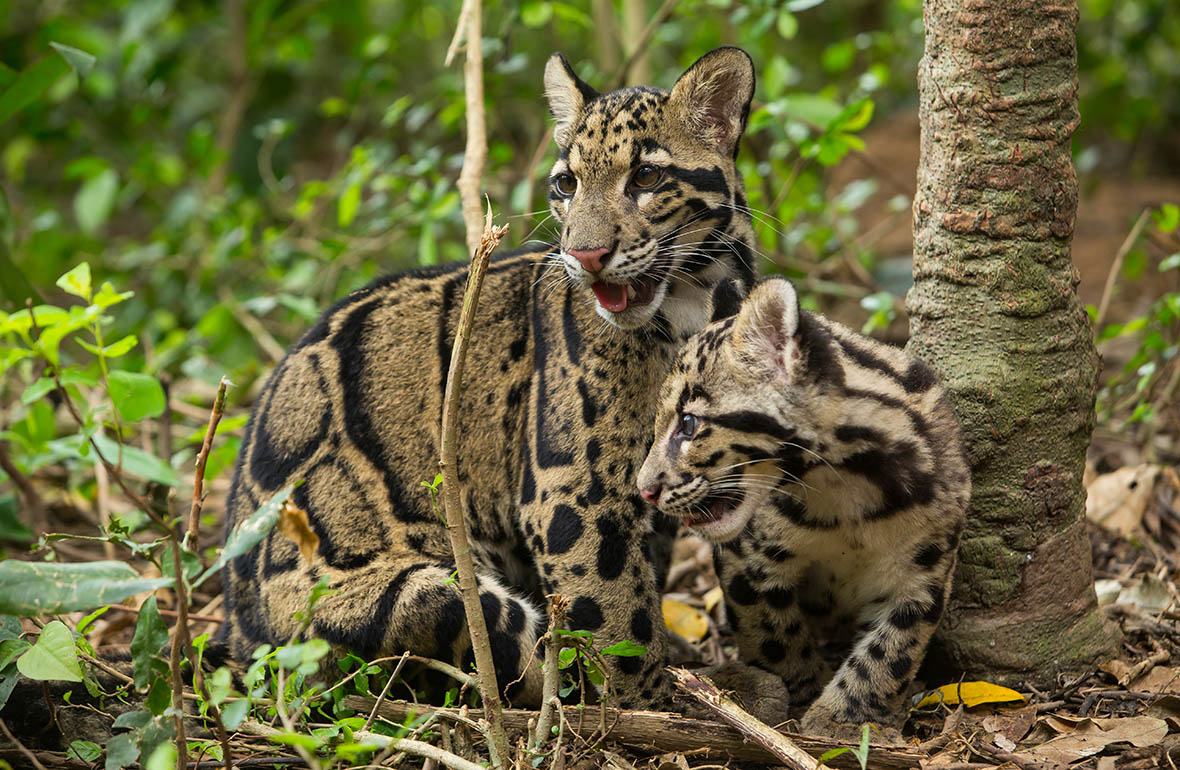
ABOVE: Known for its distinctive markings, clouded leopards are found in abundance in the Mizoram Dampa Tiger Reserve in India, just east of Bangladesh’s Chittagong Hill Tracts.
Their long tails and huge paws make them excellent tree-climbers, and they have been spotted resting among the branches in the Chittagong Hill Tracts and Himalayan foothills. Similar to spotting the gaur at the Chittagong Hill Tracts, jungle safari tours, adventure trailing and camping are options for glimpsing either the clouded or Indian leopard; anything involving local guides increases your chances. Clouded leopards are the most prized glimpses, and the nearby Mizoram Dampa Tiger Reserve in India has the most of anywhere in Southeast Asia.
Bengal Tiger
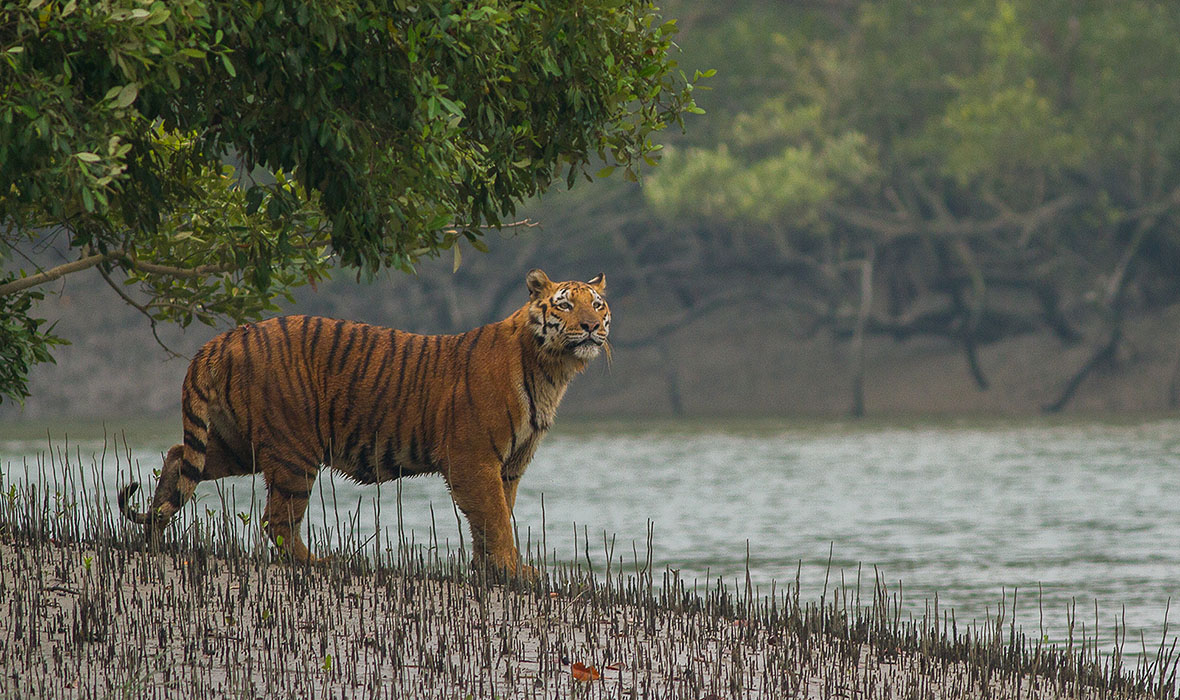
ABOVE: A rare Bengal tiger in the Sundarbans.
There is only one place to go to find the Bengal tiger in Bangladesh: the Sundarbans. It is estimated that there are only a few hundred left in Bangladesh, with some claiming that there are only around 100. With the next Bengal tiger population more than 300 kilometers away, saving this species in the Sundarbans presents problems. Due to surrounding habitat loss, the Sundarbans is thought to have a high density of tigers – though, again, not a huge total. The national animal of Bangladesh, some tours use professional trackers to find these majestic animals in the Sundarbans’ mangroves. The best time to visit is from January to May, as they tend to aggregate around the waterholes. With more tigers in Indian, Nepal, and elsewhere, time to see this animal in the Bangladesh Sundarbans is running out.

